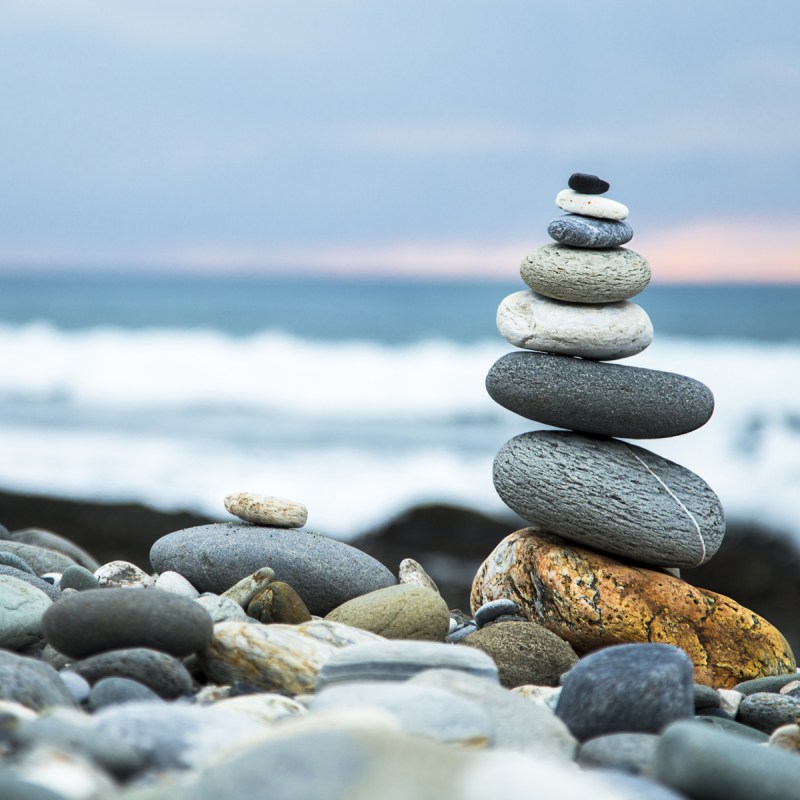
When I was much younger, one of the sports I competed in was powerlifting. In a powerlifting competition, you attempt to lift as much weight as you can possibly move for three lifts: a bench press, a squat, and a deadlift. The catch: They have to be done with proper form.
Videos by TravelAwaits
I completely fell in love with this new sport that just opened up for women. Training with my all male teammates at Black’s Health World in Cleveland, Ohio, helped me get strong. I got to a point where I could bench press more than my body weight, squat with almost 300 pounds on my shoulders, and pull close to 400 pounds off the floor for a deadlift. It was intoxicating.
To be honest, I felt this “powerlifting high” for decades. Until one day, I was cleaning the gutters of my house, which I had done many times before, and all of the sudden, the thought crossed my mind, “what would happen if I lost my balance and fell?” At that very moment, fear took over. My confidence was gone, my independence was threatened, and I felt vulnerable.
That feeling and the realization that everything from then on was going to be different, became my motivator. It set me on the path of learning as much as I could to keep the seniors I work with, as well as myself, from letting a fall totally change their lives.
Why Balance Is An Issue As We Age
According to the Centers for Disease Control and Prevention (CDC), more than 25 percent of adults over the age of 65 fall everyday. One out of five falls will cause serious injury, such as head trauma or broken bones. Those numbers don’t sound large until you realize it equates to 3 million older adults (in 2019) being treated at emergency centers for falls.
Most falls will occur due to either a slip or a trip at ground level. The most common hazards are slippery and uneven surfaces, clutter, poorly spaced furniture, unanchored rugs, or wearing ill-fitting shoes or clothing. These situations are even more hazardous if balance is impaired by a chronic disease — such as Parkinson’s — medications that cause dizziness, blood pressure fluctuations, hearing loss, vision problems, alcohol consumption, obesity, or muscle weakness caused by physical inactivity.
Why Strengthening Your Core Improves Balance
Although we hear the word “core” a lot, most people don’t realize it’s actually referring to the muscles around our torso. It’s these muscles that move, support, and stabilize the spine, back, butt, hips, and stomach. These core muscles are crucial for good posture. Weak core muscles lead to poor posture, which then negatively affects balance. In fact, the two are so interrelated that it has been said that posture is one of the most visually noticeable indicators of overall muscle weakness.
When the core muscles become weak due to physical inactivity, it perpetuates a cycle. You may have noticed these things happening to yourself or to a loved one:
- Muscle and strength start to decrease due to aging and/or physical inactivity.
- As the core muscles weaken, they aren’t strong enough to resist gravity, so they begin to slump.
- The torso slumps and the shoulders start to roll forward, pulling the spine and creating a hunchback.
- In an effort to offset the torso slump, the front of the hips start to lower, increasing curvature and pressure on the lower back.
- The head and neck shift forward, straining the muscles in the upper back and neck.
- These misalignments change the body’s center of gravity to be too far forward.
Now, the slightest trip or slip can send you sprawling. And since the muscles and bones are not strong enough to handle the impact, serious injury is likely. Hence, to improve balance, we must strengthen the core muscles and bring posture back to a more neutral position.
Pay Attention To Your Proprioceptors!
The other thing we start to “lose” with physical inactivity is our proprioceptors. These are the sensory receptors in our nervous system that give the brain information about where our body is in space. They are mainly found in muscles, tendons, joint capsules, and the inner ear. It’s a constant feedback loop between the brain and the nervous system responding to things like touch, pressure, and vibration.
Walking on different surfaces is a great example of how our proprioceptors respond. The constant feedback loop between the brain and the nervous system allows us to walk without having to consciously tell our brains when it’s time to lift another foot. And when the surface changes under our feet — say from concrete to grass — we recognize the change even though we are wearing shoes.
Since proprioceptors are part of the system that tells us when a muscle is tightened or stretched, or when a joint is bent or straightened, if we’re not moving regularly, those nerve endings start losing their sensitivity. When that begins to happen, we start feeling unsteady and have problems with balance.
If you really want to protect yourself from a fall, you’ll need to move more, not less. Step one, though, is to improve your posture.
- Start by standing sideways in a mirror, feet hip-width apart.
- Pull your torso tall as you take in a deep breath. This expands your lungs and helps lift your torso.
- As your torso lifts, tighten your lower abdominals and squeeze your butt muscles together. This should help shift your hips to be more level.
- Pull your shoulder blades down to bring rolled shoulders back to a more neutral position.
- Align ears over shoulders by shifting your head and neck back.
Another benefit to good posture is pain relief. Better posture takes the pressure off the spine and joints, helping alleviate pain. And I can’t end without saying, the best way to look at least 5 years younger is to improve your posture.
How To Improve Balance: Pro Tips
Practice good posture throughout the day. While you’re waiting in line, doing dishes, preparing a meal, shopping, even while you’re sitting or driving. My favorite time to practice posture is while walking.
For those who feel especially unbalanced as they walk, I would suggest a set of Activator Walking Poles from UrbanPoling.com. I recommend them to my senior clients — and have no affiliation or commission deal with the manufacturer — because the poles are specially-designed to improve core strength, balance, and gait. I even bought a set for my 94-year-old father who does a 30-minute walk almost everyday.
For more of TravelAwaits’ health tips, check out these stories:
